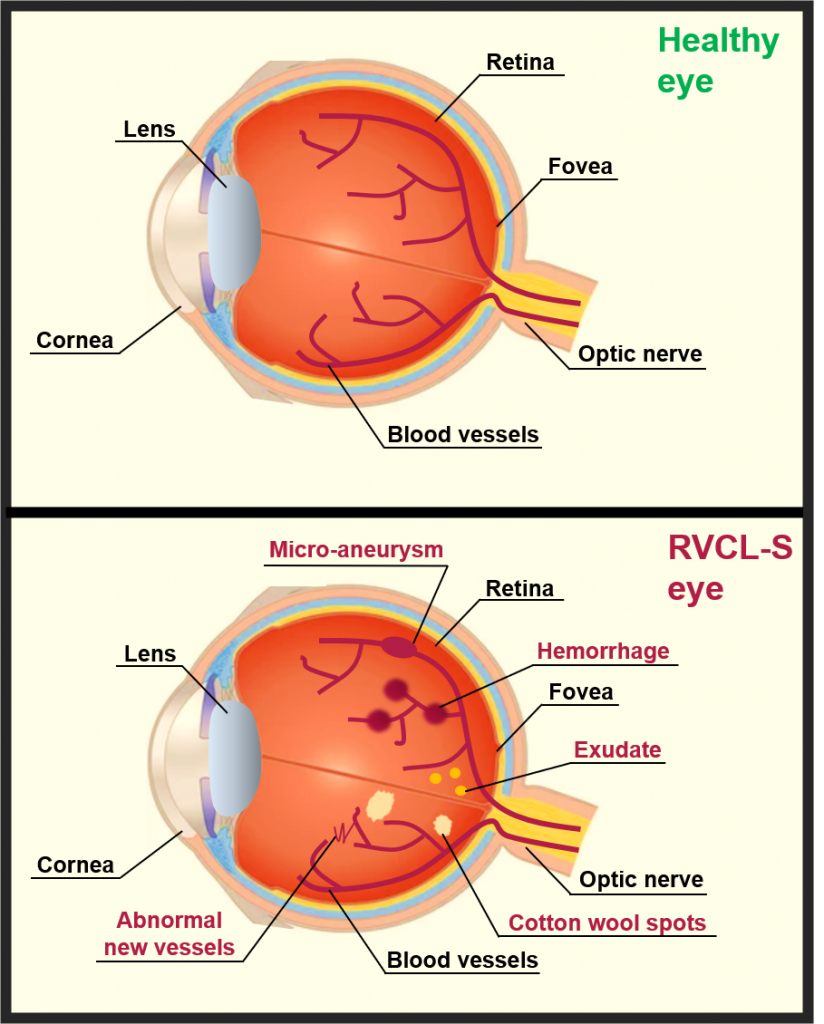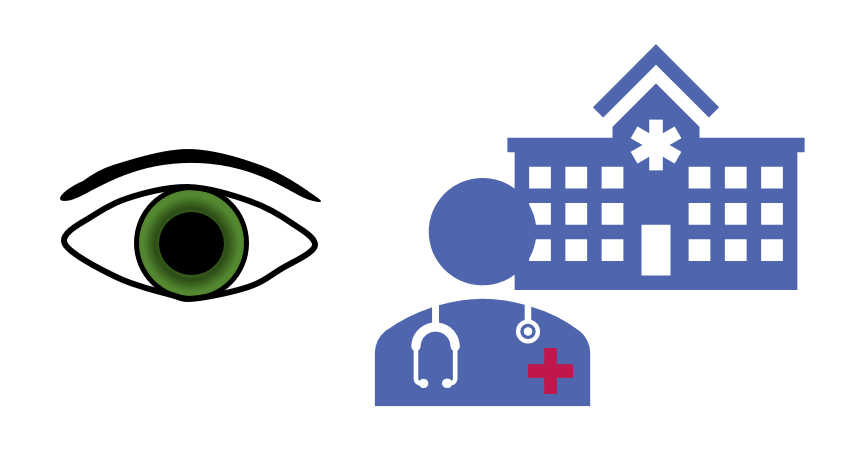Eyes
RVCL-S leads to vision problems. The vision problems can stat with dark or empty areas in the vision, but also with reduced visual acuity. Ultimately, this can lead to visual impairment or even blindness. It varies greatly from person to person when these complaints start and how severe they are.
Eyes and RVCL-S
Complaints
Loss of vision is often the first complaint of RVCL-S. The first complaints are often reduced visual acuity (blurred vision) or dark or empty areas in the vision. Ultimately, the complaints can worsen and lead to visual impairment or even blindness. It varies greatly from person to person when these complaints start and how severe they are. The first ophthalmic complaints with RVCL-S usually arise when people are between 30 and 40 years old, but this can also occur earlier or later.
What happens in the eyes in RVCL-S?
The retinopathy of RVCL-S is characterized by several abnormalities. Normally, the blood vessels of the retina are not open to certain substances such as lipids, this is due to the blood-retina barrier. This barrier gets damaged in RVCL-S. The damaged blood-retina barrier leads to leakage of lipids and fluids, causing exudates.
When the quality of the blood vessels decreases, they can stretch out, resulting in micro-aneurysms. Occlusion of the small blood vessels can also occur, causing areas of the retina to receive insufficient blood, creating the so-called “cotton wool” spots.
If the damage to the retina increases and the quality of the vessels further deteriorate, the retina eventually gets too little oxygen. In response to this, the retina will start to produce new vessels. We call this neovascularization. However, these new vessels are of poor quality and brittle. As a result, they can more easily start to bleed.

Ophthalmological treatment
It is not possible to cure retinal damage that has already occurred. However, treatment can slow down or prevent further damage to the retina. Since ophthalmological treatment may be necessary before patients develop visual complaints, all RVCL-S patients are advised to regularly visit an ophthalmologist for check-ups. More information about the treatment of retinopathy and other visual complaints can be found here.

